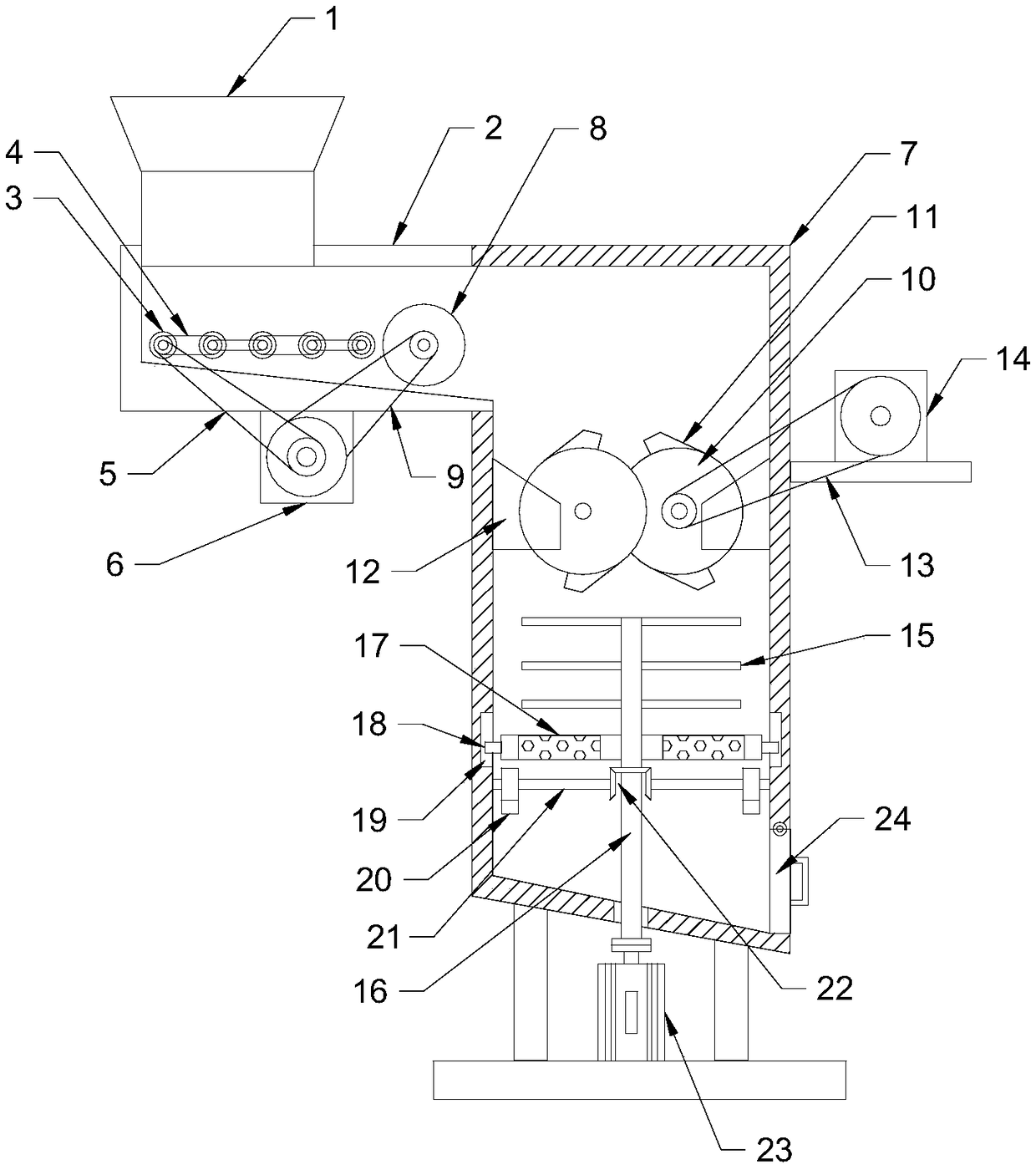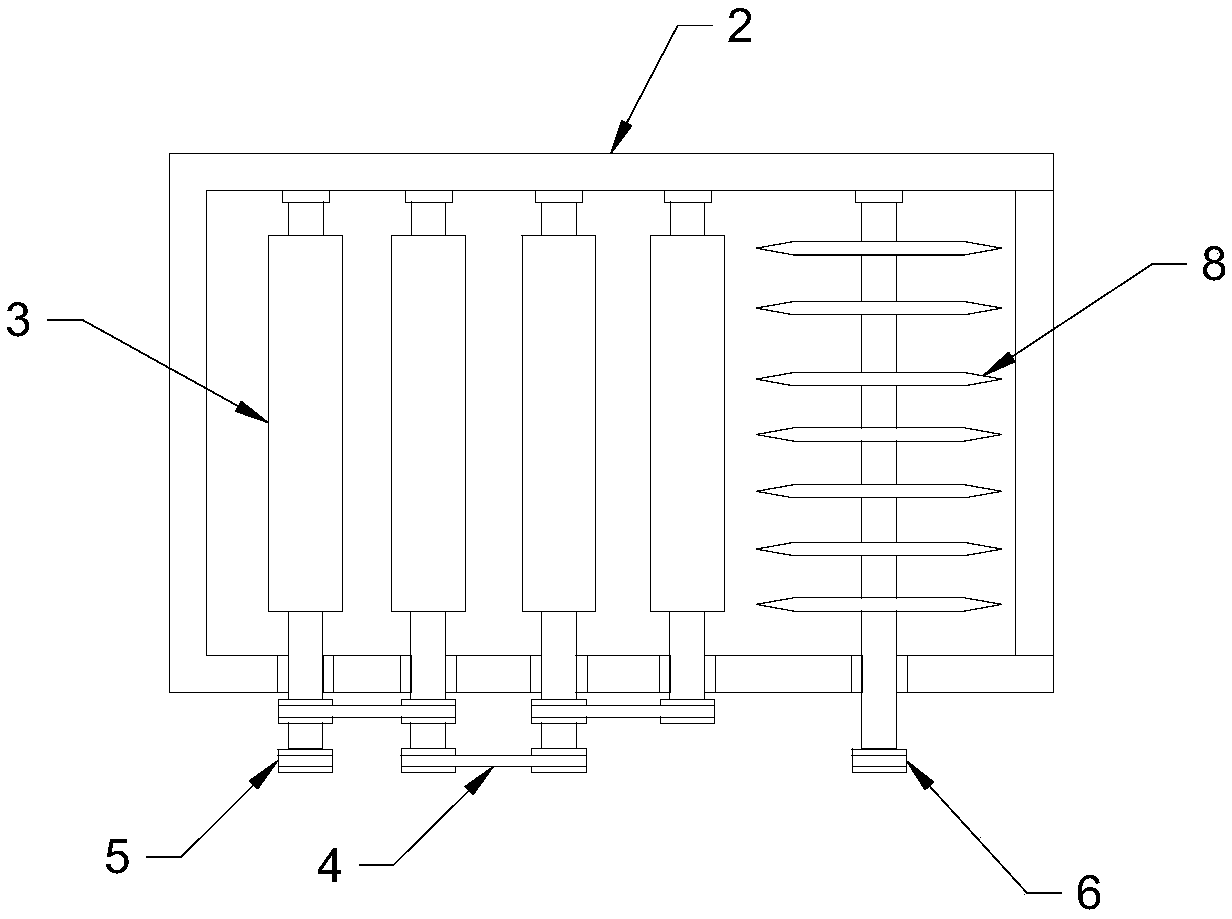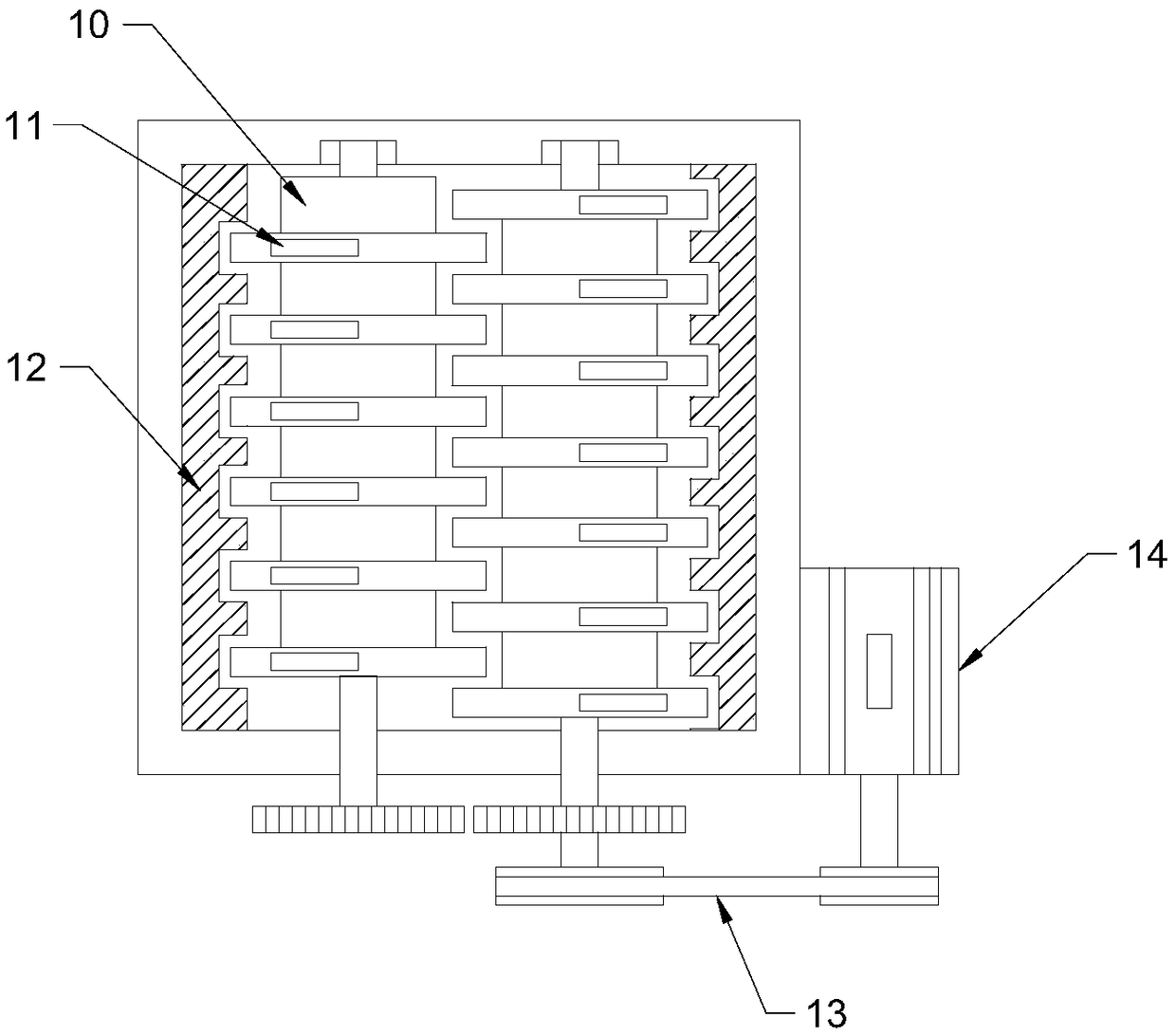Construction waste treatment device
A processing device and construction waste technology, applied in grain processing, solid separation, filtering and screening, etc., can solve the problems of unfavorable transportation and recycling, uneven crushing effect, and inability to guarantee the crushing effect, etc., to achieve fast and efficient processing, and convenient Subsequent transportation and recycling, the effect of avoiding clogging
- Summary
- Abstract
- Description
- Claims
- Application Information
AI Technical Summary
Problems solved by technology
Method used
Image
Examples
Embodiment 1
[0023] See Figure 1~3 In the embodiment of the present invention, a construction waste treatment device includes a feeding hopper 1, a feeding box 2 and a crushing box 3. A feeding box 2 is connected below the feeding hopper 1, and the feeding box 2 is provided with equidistant Distributed feeding rollers 3, feeding rollers 3 and the inner wall of the feeding box 2 are connected in rotation, the feeding rollers 3 are connected by a first transmission belt 4, and the end of the feeding roller 3 is connected with a second transmission belt 5 An output shaft of a driving motor 6, the first driving motor 6 is fixedly connected to the lower end surface of the conveying box 2 through bolt-fixed waterproof, the first driving motor 6 drives the conveying roller 3 to rotate to transport the construction waste.
[0024] A crushing box 7 is connected to the right side of the conveying box 2, and a cutting blade roller 8 is provided at the connection between the conveying box 2 and the crus...
Embodiment 2
[0028] See Figure 4 The difference between this embodiment and embodiment 1 is that: the inner wall of the upper end of the crushing box 7 is fixedly connected with a dust collecting cover 25, the dust collecting cover 25 is connected with an induced draft fan 26 through a pipeline, and the induced draft fan 26 is connected with a cyclone settling cylinder 27 through a pipeline. , Actively suck the dust in the crushing process to avoid dust overflow and pollute the working environment.
PUM
 Login to View More
Login to View More Abstract
Description
Claims
Application Information
 Login to View More
Login to View More - R&D
- Intellectual Property
- Life Sciences
- Materials
- Tech Scout
- Unparalleled Data Quality
- Higher Quality Content
- 60% Fewer Hallucinations
Browse by: Latest US Patents, China's latest patents, Technical Efficacy Thesaurus, Application Domain, Technology Topic, Popular Technical Reports.
© 2025 PatSnap. All rights reserved.Legal|Privacy policy|Modern Slavery Act Transparency Statement|Sitemap|About US| Contact US: help@patsnap.com



